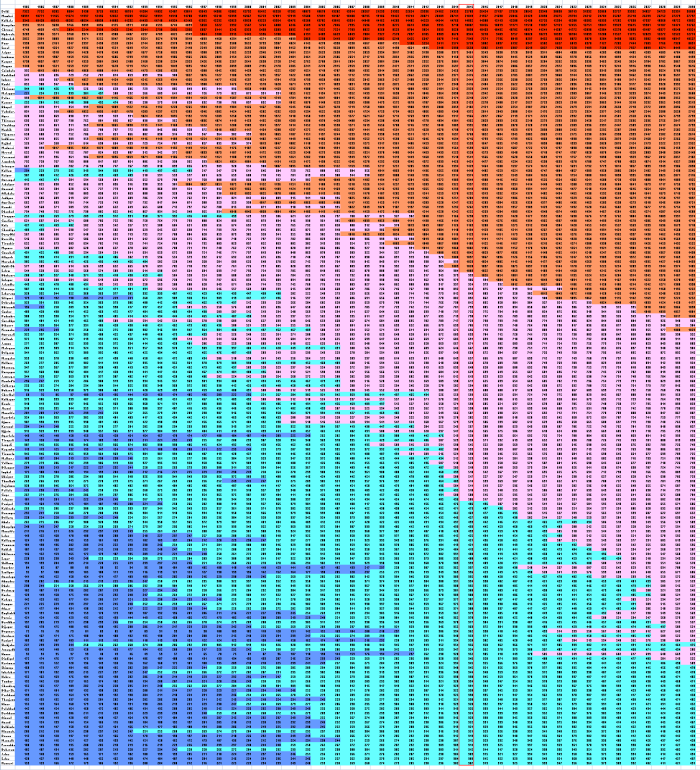Posts Tagged ‘Ujjain’
The cities and their multitudes

The 166 Indian cities in the UN population list. What do the colours mean? Dark blue is for city populations up to 250,000; light blue is 250,000-500,000; pink is 500,000 to 1 million; orange is 1 million to 5 million; red is 5 million and above. The source for the data is ‘World Urbanization Prospects: The 2014 Revision’, from the United Nations, Department of Economic and Social Affairs, Population Division.
Bigger cities growing at a rate faster in the last decade than earlier decades. This is what the image shows us. These are 166 cities of India whose populations in 2014 were 300,000 and above. The jagged swatches of colour that seem to march diagonally across the image describe tiers of population, for the table is arranged according to the populations of these cities in 2015, with the annual series beginning in 1985 and extending (as a forecast) until 2030.
The populations of four cities will cross 0.5 million in 2015: Jalgaon (Maharashtra, whose population will be 506,000 in 2015), Patiala (Punjab, 510,000), Thoothukudi (Tamil Nadu, 514,000) and Imphal (Manipur, 518,000). They will join a group of cities which in 2014 crossed the 0.5 million mark: Gaya (Bihar, 508,000 in 2015), Rajahmundry (Andhra Pradesh, 511,000), Udaipur (Rajasthan, 517,000), Bilaspur (Chhattisgarh, 518,000), Kayamkulam (Kerala, 533,000) and Agartala (Tripura, 550,000).
Just ahead of these are Vellore (Tamil Nadu, whose population in 2015 will be 528,000 and which crossed 0.5 million in 2013), Mathura (Uttar Pradesh, 529,000 and 2014), Tirunelveli (Tamil Nadu, 530,000 and 2011), Sangli (Maharashtra, 545,000 and 2009), Tirupati (Andhra Pradesh, 550,000 and 2013), Ujjain (Madhya Pradesh, 556,000 and 2009), Kurnool (Andhra Pradesh, 567,000 and 2012), Muzaffarnagar (Uttar Pradesh, 587,000 and 2011), Erode (Tamil Nadu, 590,000 and 2010) and Cherthala (Kerala, 593,000 and 2013).
To make this chart I have used the data from ‘World Urbanization Prospects: The 2014 Revision’, from the United Nations, Department of Economic and Social Affairs, Population Division. The 166 cities of India are extracted from the main table, ‘Annual Population of Urban Agglomerations with 300,000 Inhabitants or More in 2014, by Country, 1950-2030’.